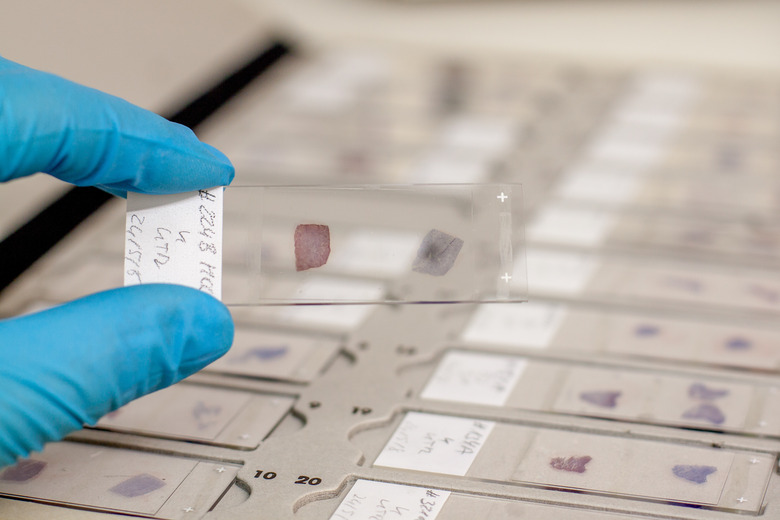What Happens To An Animal Cell In A Hypotonic Solution?
Unlike plant cells that have rigid cell walls, animal cells have flexible cell membranes that allow the cell to enlarge or shrink. This membrane also controls what enters and leaves the cell, and when the concentration of salts and other molecules in external fluid changes, the cells reacts by changing the inner concentration to match what's outside. So if the external solution becomes more dilute, or hypotonic, water will move into the cell until it balances the internal and external concentration. As a result, the cell enlarges, or swells. Such changes can be minor or, if the change is severe, might damage or destroy the cell.
How Fluid Moves
How Fluid Moves
Every cell is surrounded by a plasma membrane that regulates passage of water. The liquid outside the cell, called extracellular fluid, contains many molecules that together make up the solute. All cells are surrounded by this extracellular fluid, which can be small in amount when cells are close together, or abundant, such as when red blood cells move in the blood. When the concentration of solute differs between the inside of a cell and the extracellular environment, solvent – or water – tends to move into or out of cells in a direction that helps balance these differences.
What is Tonicity?
What is Tonicity?
The amount of solute in a fluid, such as salts or small molecules, determines its tonicity. The normal, healthy amount of solute in the fluid in your body is called the isotonic condition. Under normal circumstances, the tonicity inside the cell is the same as outside, so the cell is also called isotonic. This situation is ideal and it means that the flow of water into the cell equals the flow of water out of the cell. But sometimes, these concentrations are different. For example, if you become dehydrated, the salt concentration in extracellular fluid can increase due to the lack of water, causing an imbalance. In this situation, the extracellular fluid is called hypertonic.
A Hypotonic Solution
A Hypotonic Solution
Fluid surrounding a cell could also become less concentrated than that inside the cell – called hypotonic. This might happen for short periods if you drink large amounts of fluid, or it could develop if your kidneys don't function normally. In this case, water moves into the cell from outside, to help balance the concentration on either side of the cell membrane. This process continues until the solutions reach equal concentrations. In extreme situation, so much water might move into the cell that it ruptures from internal pressure, causing its death.
Cite This Article
MLA
Carr, Kevin. "What Happens To An Animal Cell In A Hypotonic Solution?" sciencing.com, https://www.sciencing.com/happens-animal-cell-hypotonic-solution-2607/. 13 March 2018.
APA
Carr, Kevin. (2018, March 13). What Happens To An Animal Cell In A Hypotonic Solution?. sciencing.com. Retrieved from https://www.sciencing.com/happens-animal-cell-hypotonic-solution-2607/
Chicago
Carr, Kevin. What Happens To An Animal Cell In A Hypotonic Solution? last modified March 24, 2022. https://www.sciencing.com/happens-animal-cell-hypotonic-solution-2607/
